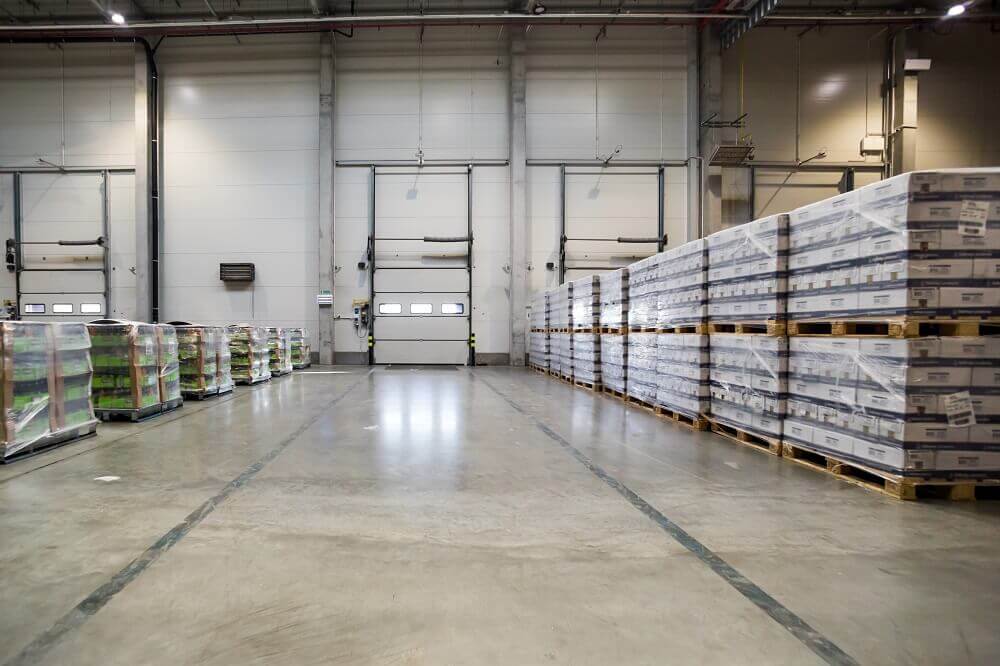Epoxy coating is a chemical compound that consists of basic components of cured end epoxy resins, which are also referred to as polyepoxides. Epoxy resins belong to a group of polymers and prepolymers that also contain epoxide groups. It’s a two-component formula that consists of epoxy resin and hardener that protects a variety of different materials and surfaces from external damages.
Typically used to protect indoor industrial flooring, epoxy floor coatings are ideal for environments such as car repair shops and commercial or residential garages where chemical and oil leaks are common. Epoxy coatings are usually applied in a multistep process that includes using a primer (unless it is a self-priming epoxy), a colourbase coat, and then a topcoat for an extra layer of protection. There are a variety of topcoats that can be used—from epoxy, polyaspartics, or polyurethanes. As well, there are decorative options with epoxy floors like metallics or flake.

Characteristics of Polyaspartic and Epoxy Coatings
Epoxy Floor Coatings
Epoxy floor coatings are inexpensive and have been the main choice of floor protection for many decades. It tends to be less flexible in environments that are overexposed to UV rays and temperature changes. Freeze-thaw cycles that cause concrete to contract and expand can weaken the bond between the coating and the floor, causing it to separate and crack. Exposure to UV rays can cause epoxy coatings to yellow over time.
Internal temperatures should be above 55 degrees Fahrenheit to make an appropriate atmosphere for epoxy application. Temperatures below that will prevent the coating from adhering to the floor or curing properly.
Most mechanics and auto repair shops probably won’t care about a slight yellowish or amber tinge in their flooring, but if you manage a showroom then the aesthetic finish is more important. If you care about the colour of the flooring and the coating is going to be exposed to the UV rays from the sun for any period of time, then epoxy may not be the best choice of protection.
Polyaspartic Floor Coatings
Like epoxy coatings, polyaspartic floor coatings have also been on the market for many years and they have proven floor protection benefits. Polyaspartic floor coatings are anticorrosive and are therefore ideal for various types of metal and concrete portions of bridges and other outdoor structures.
Additionally, polyaspartic coatings can be used for high-impact indoor industrial flooring in environments that are likely to experience a lot of chemical and oil spillage just like epoxy.
Application can be completed in as little as a day depending on the size of the space—the polyaspartics cure much faster than the epoxies. Aside from significant long-term cost savings, the benefits of polyaspartic floor coatings include minimizing inconvenience and downtime to property owners and the amount of layer applications required.
Also, there are no application temperature limits. Polyaspartic coatings can be applied in a wide range of extreme hot or cold temperatures. This means that you have more flexibility in scheduling your project rather than waiting for a certain season to apply a polyaspartic floor coating.
Polyaspartic coatings are also UV-stable which means they can withstand long-term sun exposure without fading or separating from the floor underneath. Due to their high elasticity, polyaspartics are more flexible and bond better with certain materials, especially concrete floors. As your concrete floor expands and contracts due to various temperature changes caused by freeze-thaw cycles, the polyaspartic coating will expand and contract right along with it rather than separating, bending, or cracking.
The only real downfall to using polyaspartic floor coatings is that they come with a higher price tag than epoxy floor coatings. The main benefits of polyaspartics being they’re more durable, better equipped to handle a variety of temperature and environmental changes, and cure faster.
Uses of Polyaspartic and Epoxy Coatings
Epoxy coatings are typically better suited for indoor environments and surfaces. They’re usually applied to flooring, decks, and countertops to protect them from damage and extend the lifespan of the substrate material. Although they falter when it comes to waterproofing flooring due to their lack of flexibility, epoxy coatings are extremely durable and are used as a protective coating for concrete floors, cement screeds, steel, and other industrial materials.
Polyaspartic coatings were first developed in the 1990s as a means of protecting metal and concrete portions of bridges against harsh outdoor elements that cause corrosion. Since then, its uses have been expanded to include a number of other applications including light poles, tunnels, wood floors, concrete floors, and rail cars. All of these structures are composed of various materials such as wood, metal, and concrete that polyaspartic coatings bind to seamlessly in varying temperatures and weather conditions.
Pros and Cons of Polyaspartic Coatings vs. Epoxy
Pros of Polyaspartic Coatings
- Easy application for professionals, although you do need to work faster with this material than you would with an epoxy
- Colourfast protection
- Durable without losing flexibility
- Great air quality (Low VOC)
- Lots of colour and finish options
- Fast drying time (cures within 30 minutes to an hour depending on surface size and material)
Cons of Polyaspartic Coating
- Expensive
- Hard application (needs to be done by professionals, requires absolute precision)
- Requires quick application
Pros of Epoxy Coating:
- Inexpensive
- Strong material adherence (due to longer drying time)
- Durable (dries hard, can withstand heavy traffic)
- Long pot life (doesn’t dry as fast as polyaspartic, which means you can take your time applying it and do it yourself)
- Chemically resistant (can withstand exposure to battery acid, oil spills, and other chemicals)
- Different style and colour options
Cons of Epoxy Coating:
- Inflexible once dry
- No Colourfast option
- Long drying time
- Potential low air quality
- Temperature sensitive from both an application and expansion/contraction of the substrate perspective
- Not UV stable
- Not recommended for waterproofing applications
Methods of Applications: Polyaspartics vs. Epoxy
Epoxy Coatings
- To avoid inhaling epoxy fumes, wear proper protective gear at all times including a mask with an air filter.
- Paint around the edges of the space where epoxy will be applied with a bristle brush.
- Fill in the rest of the space using an extended paint roller.
- Epoxy coatings take a while to cure, so wait about 16 hours after applying the first layer. For proper surface adherence, make sure each layer is smooth and even.
- Apply the second layer. Then apply non-skid granules to make the coating slip resistant. Allow 16 hours for it to cure. Adhere to the manufacturer’s recommended curing times if they’re less or more.
- After the second layer dries, you can add a topcoat for an extra layer of protection.
- It takes up to one month for the protective coating to fully cure on concrete floors, but the surface will be ready for foot and vehicular traffic in about one week.
Polyaspartic Coatings
- Pour large amounts of the polyaspartic solution on the floor and then spread it out using a long squeegee or paint roller.
- Make sure that it’s even and adhere to the manufacturer’s recommended thickness level. The coating should be dry enough to walk on within an hour or so.
- At this time, you can apply the second coat. For an anti-slip surface an aggregate broadcast is recommended with back rolling.
As quick and easy as polyaspartic coating application is, it’s important that you prepare for it well in advance because you will be racing against the clock to complete the process before the coating dries. Even a single misstep throughout the process can ruin the entire application.
Why Choose Our Polyaspartic and Epoxy Coating Products?
IMC Distributors is the exclusive provider of ISOMAT products in Canada. We carry a wide range of chemical-resistant coatings and concrete sealers that are perfectly suited for your industrial, commercial, and residential building requirements. Epoxy and polyaspartic floor coatings have a lot of benefits, which makes them some of our top performing products. Contact us today to learn more about our products or to place an order.
 Karli Logan is the Owner and President of IMC Distributors which is the exclusive partner of Nukote Coating Systems in Canada. With a B.Sc and M.Sc, as well as a demonstrated history of working across a number of industries, she has a passion to drive significant gains and benefits for IMC’s clients.
Karli Logan is the Owner and President of IMC Distributors which is the exclusive partner of Nukote Coating Systems in Canada. With a B.Sc and M.Sc, as well as a demonstrated history of working across a number of industries, she has a passion to drive significant gains and benefits for IMC’s clients.